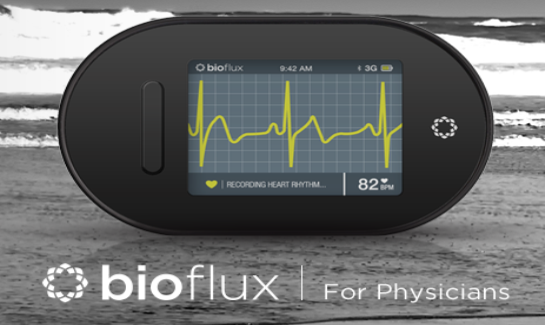biotricity Wearables are a Good Fit for Healthcare
August 31, 2016
BTCY Research Report
CEO Interview on Small Cap Nation
Promoted by biotricity
Medically relevant wearable technology can relieve the overstretched NHS while engaging patients in their healthcare and promoting preventive medicine Healthcare systems are facing a crisis. Chronic illnesses combined with an ageing population and rising healthcare costs are rapidly increasing the burden on the NHS. The pressure will continue to rise because 23 per cent of the UK’s population will be aged over 65 by 2039.
The Department of Health estimates that patients not adhering to their physician’s guidance cost the NHS up to £300million a year in unused medicines. According to the Center for Disease Control, 86 per cent of all US healthcare spending is on treating chronic medical conditions. Globally, health-risk behaviour,such as physical inactivity and poor nutrition, costs healthcare systems $53 billion. With chronic illnesses on the rise, the demand for long-term care increases and patient compliance is crucial. All too often, patients who have gone through some ordeal and are forced to live with a condition for the rest of their lives are not compliant with health regimes and swiftly fall back to their old habits. In order to avoid this type of relapse and the subsequent treatment costs, long-term patient care must be improved and, most importantly, the current healthcare landscape must be changed.
“biotricity is a frontrunner in the race to bridge the healthcare gap by employing innovative monitoring technology” biotricity, a leading-edge healthcare technology firm, believes that compliance rates can be increased and quality of life enhanced with diagnostic and monitoring support. We are accustomed to people with diabetes routinely monitoring their own glucose level, and adjusting diet and regime. But what if that principle could be extended to a cardiac patientso they could detect an alarming arrhythmia and share ECG data with their physician? The integration and ultimate adoption of wearable technology into healthcare practices has the ability to reduce patient visits, as physicians will be able to monitor and track patients’ health remotely. The big challenge is to change the current healthcare model where physicians diagnose and treat conditions and diseases after manifestation. “Costs are spiralling out of control because we have a population growing older and suffering from chronic illness. We have increased demand at a time of dwindling resources and these demographics are pushing healthcare systems around the world into bleak territory,” says Waqaas Al-Siddiq, biotricity’s founder and chief executive.
“The fact that patients don’t comply is a further drain,so we mustswitch from a reactive approach to preventative care.” biotricity is a frontrunner in the race to bridge the healthcare gap by employing innovative monitoring technology that is initially designed to help patients and physicians deal with a range of heart problems. Patient monitoring devices have the potential to disrupt the healthcare industry by aiding the selfmanagement and prevention of chronic disease. As a result, research into such technology is becoming more prevalent. Rapid integration into existing healthcare diagnostic and billing systems will position such solutions to resolve a number of health-related problems by making it easier to track compliance and health outcomes. RELATED ARTICLES: Medical wearables to help UK’s ageing population How technology can inform care and treatment Technology is key to unlock healthcare costsavings Sensor worn technology is now at a point where it can be utilised to guarantee health and wellness transparency from the inside out.
Tomorrow’s medical-grade wearables will connect into a system of constant monitoring, improving healthcare by collecting real-time biometrics from the body, and will become a key to incentivising physicians and individuals to utilise the devices themselves. biotricity’s approach is to provide intelligent diagnostic and post-diagnostic solutions for physicians, and then make the technology available to the consumer for long-term care management. This offers the ability to reverse the trend so that costs drop and physicians can maintain an accurate picture of patient health in real-time. Interventions can then be timely and more effective. The company has chosen to enter the cardiac market with its first product as cardiovascular disease is the number-one killer in the US and UK. biotricity has created two wireless ECG monitoring devices. bioflux, which already has been submitted to the US Food and Drug Administration, improves a doctor’s ability to test and diagnose patients with cardiovascular problems. biolife, the company’s second offering currently in development, is a wearable medical device for individuals to track their progress in real time and stay motivated while making lifestyle changes.
For example, bioflux can provide a critical function via its unique 30-day monitoring option, which adds to the accurate ECG diagnostic. The device will monitor a patient’s heartrhythm and transmit the data in real time to a 24-hour monitoring lab, which can provide early warning to both patient and physician on any changes in heartrhythm. “Based on our research, it is clear that if an individual has a feedback loop, it incentivises them to follow doctor’s instructions,” says Mr Al-Siddiq. In addition, wearables are tapping into social circles, encouraging users to exchange information, measure progress and provide extra support. Mr Al-Siddiq, a former investment adviser and an expert in wireless technology, believes medical wearables can contribute to significantsavings for health systems and be a beacon for preventative care. The innovations illuminate a pathway from the current financial gloom afflicting global healthcare systems. “If we don’tsolve this, we are going to see a lot of bankrupt healthcare systems,” he concludes.
The only way to address the deficiencies in healthcare is to encourage disease prevention and drive up patient compliance. Patients with long-term conditions deserve better care and biotricity’s monitoring devices pave the way for a fundamentally new approach to help them lead long, healthy lives.”
For further details on the launch of bioflux and biolife, visit our website www.biotricity.com
Search
RECENT PRESS RELEASES
Related Post








